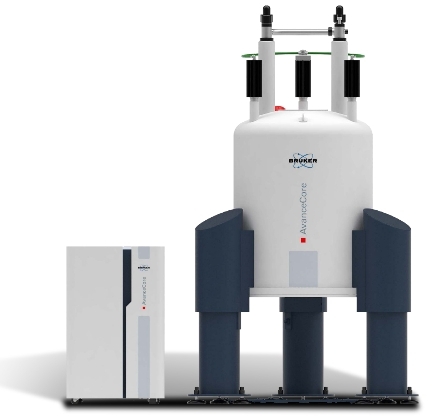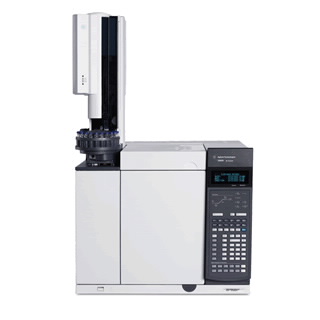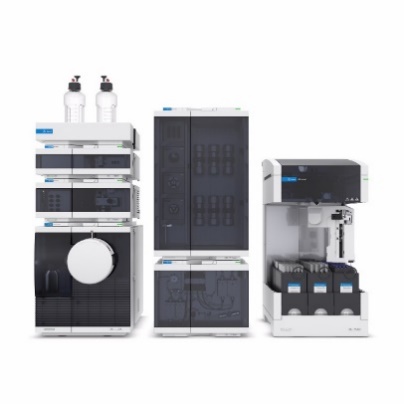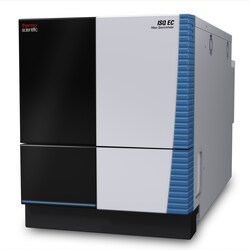What are kahweol?
Kahweol (C20H26O3) is a naturally occurring diterpenoid compound found mainly in coffee beans, structurally similar to cafestol, and is an important constituent of coffee fats with antioxidant, anti-inflammatory, and potentially anticancer properties. As a diterpenoid compound found in coffee beans, the quantitative and structural analysis of Kahweol is essential for the following applications:
Quality control
- Ensure purity of commercial Kahweol batches for pharmacological studies
Food Processing Optimisation
- Accurately quantify changes in Kahweol content during baking and extraction, and optimise processes to retain active ingredients
Metabolic mechanism studies
- Elucidate the metabolic behaviour of Kahweol in the cytochrome P450 pathway in conjunction with structural analysis
Creative Proteomics delivers kahweol analysis services tailored to accelerate research and industrial workflows.
Kahweol Analysis Service by Creative Proteomics
Creative Proteomics provides a wide range of specialized services for kahweol analysis to ensure high-precision data back your research and development processes. Our service offerings include:
Kahweol ldentification and Quantification
- Targeted GC-MS or LC-MS/MS analysis for accurate quantification of kahweol.
- Absolute and relative quantification with internal standards.
Metabolite Profiling
- Identification and quantification of kahweol-related metabolites (e.g., cafestol, 16-O-methylcafestol)
Kahweol Structural Characterization
- High-resolution MS and MS/MS analysis for kahweol structural elucidation.
- Fragmentation pattern analysis to determine molecular structure and confirm identity.
Isotope Tracing Studies
- Quantifying metabolic rates by labelling kahweol and other kahweol metabolites reveals dynamic metabolic processes.
- Combined with mass spectrometry to track the binding of isotopically labelled compounds in metabolic pathways to determine metabolic rates and pathway activity.
Custom Assay Development
- Development and validation of customized kahweol quantification assays.
- Optimization of extraction and sample preparation protocols for diverse sample matrices.
Data Interpretation and Report Generation
- Detailed, scientifically rigorous reports, including all relevant data, trends and analyses.
List of Kahweol-Related Metabolites (including but not limited to)
Our advanced platforms enable precise detection of the following analytes:
| Compound/Pathway |
Detection Method |
Limit of Quantification (LOQ) |
| Kahweol |
HPLC-MS/MS |
0.1 ng/mL |
| Cafestol |
GC-FID |
0.05 µg/g |
| 16-O-Methylcafestol |
UPLC-QTOF |
0.2 ng/mL |
| Diterpene Epoxides |
LC-Orbitrap HRMS |
5 pg/mg |
| Glutathione Conjugates |
Triple Quadrupole MS |
10 nM |
Techniques and Instrumentation for Kahweol Analysis
 Bruker 400 MHz NMR spectrometer (Figure from Bruker)
Bruker 400 MHz NMR spectrometer (Figure from Bruker)
 7890B Gas Chromatograph (Figure from Agilent)
7890B Gas Chromatograph (Figure from Agilent)
 Mass-Based 1290 Infinity II Preparative LC/MSD System (Figure from Agilent)
Mass-Based 1290 Infinity II Preparative LC/MSD System (Figure from Agilent)
 ISQ™ EC Single Quadrupole MS (Figure from Thermo Scientific)
ISQ™ EC Single Quadrupole MS (Figure from Thermo Scientific)
Workflow for Kahweol Analysis Service

Why Choose Us?
Our Kahweol analytical services offer several compelling advantages that ensure you get high quality, reliable and accurate results:
- High Precision: We utilize high-resolution LC-MS/MS (Liquid Chromatography-Mass Spectrometry) and GC-MS (Gas Chromatography-Mass Spectrometry) technologies for accurate detection and quantification of Kahweol and its metabolites.
- Comprehensive metabolic analysis: Our services not only provide measured values for Kahweol, but also a detailed understanding of the entire metabolic pathway leading to its derivatives and end products.
- Assay Stability: 6 quality controls for high quality data
- Dynamic range: Linear quantification from 0.1 ng/mL to 100 µg/mL
- Speed & Efficiency: Our advanced systems allow for fast processing and quick turnaround without compromising quality.
- Scientific expertise: Our team of experts with over 20 years of experience in biochemical and molecular analysis ensures that your samples are handled with the highest level of scientific integrity.
- Comprehensive analysis: 12 analyses, 22 graphical displays.
- Fast turnaround: results available within 7-10 business days.
Applications of Kahweol Analysis
Food and Beverage
Quality control and optimization of coffee products and coffee-based beverages
Coffee Variety Selection
To analyze the synthesis efficiency of Kahweol in different coffee plants and to screen high bioactive varieties
Functional product development
Ensure standardized content of Kahweol in nutritional supplements or functional foods, verify its chemical stability and purity
Pharmacology and Toxicology
Understanding the metabolic pathways of Kahweol and its effect on human health and potential side effects
Sample Requirements for Kahweol Analysis Assay
For optimal results, we request the following sample types and volumes. Below is a summary of our sample requirements:
| Sample Type |
Minimum Quantity |
Storage Conditions |
| Green Coffee Beans |
100 mg |
-20°C, dry |
| Roasted Coffee Powder |
50 mg |
Airtight, room temperature |
| Biological Fluids |
200 µL |
-80°C, no freeze-thaw cycles |
| Plant Tissues |
500 mg |
RNAlater or flash-frozen |
| Coffee Extracts |
1 mL |
Refrigerated or -20°C for long-term |
 LC–MS analysis of metabolites from strains engineered for pentacyclic triterpene saponin production derived from β-amyrin and oleanolic acid (Figure from Yu Wang et al., 2022).
LC–MS analysis of metabolites from strains engineered for pentacyclic triterpene saponin production derived from β-amyrin and oleanolic acid (Figure from Yu Wang et al., 2022).
 Total ion current (TIC) chromatograms of leaves and roots in the negative-ion modes annotated with identified metabolites (1, 2, 3, 6, 8, 10, 18, 19 and 21), including corresponding structure, retention time (RT), and mass to charge ratio (m/z) (Figure from Jiadong Hu et al., 2022).
Total ion current (TIC) chromatograms of leaves and roots in the negative-ion modes annotated with identified metabolites (1, 2, 3, 6, 8, 10, 18, 19 and 21), including corresponding structure, retention time (RT), and mass to charge ratio (m/z) (Figure from Jiadong Hu et al., 2022).
Case. Functional identification of the diterpene synthases exploring the landscape of diterpene structural diversity in Isodon
Background:
- Diterpenoids are a richly abundant class of natural products with diverse and complex structures, which provide the pharmaceutical industry with a large number of therapeutic leads and are an important source of inspiration for drug design.
- The genus Isodon is widely used in traditional herbal medicine and is of interest for its richness in bioactive diterpenoids and structural diversity.
- In this study, we performed multi-omics analysis of Isodon and reconstructed the metabolic pathways in Escherichia coli, systematically mined and functionally validated 11 diterpene synthases, and reported four new diterpene skeleton biosynthesis processes in genus Isodon for the first time.
Samples:
- three Isodon species (i.e. I. eriocalyx, I. parvifolius and I. adenanthus) were collected in October 2022 from Yunnan Province.
- Isodon species roots, stems and leaves were rapidly separated after fresh plant collection, then frozen in liquid nitrogen and preserved for composition analysis, total RNA extraction and transcriptome sequencing.
- Three biological replicates were included for each line, with six plants for each biological replicate
Technical methods procedure:
- Metabolome analysis and differential analysis of diterpenoid metabolites in three Isodon species plants
- Transcriptomic analysis of three Isodon species and identification of differentially expressed genes
- Phylogenetic relationships of diterpene synthases in three Isodon species, functional characterization of class I and II diterpene synthases (diTPSs)
Results
- Thirty-three diterpenoids were identified in three Isodon species plants, covering seven different structural types.
- Enantiomeric shell firane-type (ent-kaurene-type) diterpenoids are the most common compounds in the genus Aromatica. These compounds tend to accumulate in higher concentrations in leaves and roots compared to stems
- Through transcriptome and reference gene analysis, 32 diterpene synthase (diTPSs) genes were screened and a regulatory network map of DEGs in the genus Isodon was constructed.
- IpaCPS1 and IpaCPS2 catalyzed the formation of CPP and ent-CPP, respectively.
- IpaKSL4, IadKSL3, and IerKSL6 catalyzed the formation of new diterpenoids, respectively, which were found for the first time in the genus Isodon.
 Proposed diterpenoid biosynthetic pathway in Isodon genus. (Figure from Xinqi Song et al., 2025)
Proposed diterpenoid biosynthetic pathway in Isodon genus. (Figure from Xinqi Song et al., 2025)
Reference
- Xinqi Song et al., Functional identification of the diterpene synthases exploring the landscape of diterpene structural diversity in Isodon. Plant Physiology and Biochemistry 222, 109677 (2025). https://doi.org/10.1016/j.plaphy.2025.109677


 Bruker 400 MHz NMR spectrometer (Figure from Bruker)
Bruker 400 MHz NMR spectrometer (Figure from Bruker) 7890B Gas Chromatograph (Figure from Agilent)
7890B Gas Chromatograph (Figure from Agilent) Mass-Based 1290 Infinity II Preparative LC/MSD System (Figure from Agilent)
Mass-Based 1290 Infinity II Preparative LC/MSD System (Figure from Agilent) ISQ™ EC Single Quadrupole MS (Figure from Thermo Scientific)
ISQ™ EC Single Quadrupole MS (Figure from Thermo Scientific)




 LC–MS analysis of metabolites from strains engineered for pentacyclic triterpene saponin production derived from β-amyrin and oleanolic acid (Figure from Yu Wang et al., 2022).
LC–MS analysis of metabolites from strains engineered for pentacyclic triterpene saponin production derived from β-amyrin and oleanolic acid (Figure from Yu Wang et al., 2022). Total ion current (TIC) chromatograms of leaves and roots in the negative-ion modes annotated with identified metabolites (1, 2, 3, 6, 8, 10, 18, 19 and 21), including corresponding structure, retention time (RT), and mass to charge ratio (m/z) (Figure from Jiadong Hu et al., 2022).
Total ion current (TIC) chromatograms of leaves and roots in the negative-ion modes annotated with identified metabolites (1, 2, 3, 6, 8, 10, 18, 19 and 21), including corresponding structure, retention time (RT), and mass to charge ratio (m/z) (Figure from Jiadong Hu et al., 2022). Proposed diterpenoid biosynthetic pathway in Isodon genus. (Figure from Xinqi Song et al., 2025)
Proposed diterpenoid biosynthetic pathway in Isodon genus. (Figure from Xinqi Song et al., 2025)

